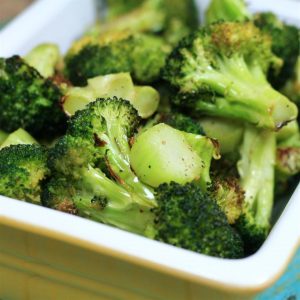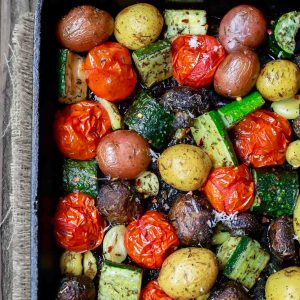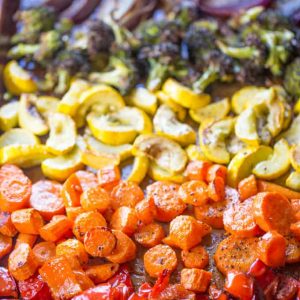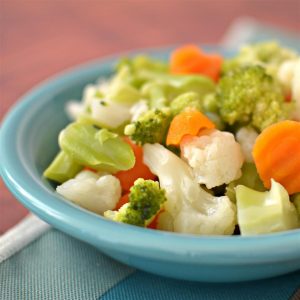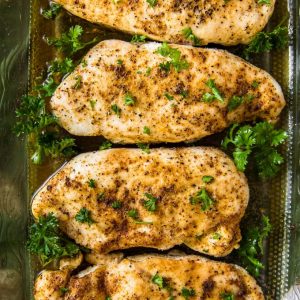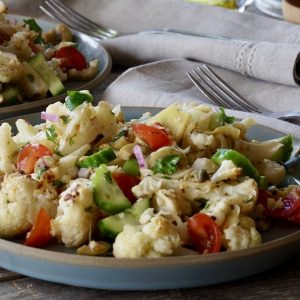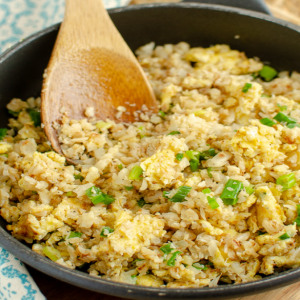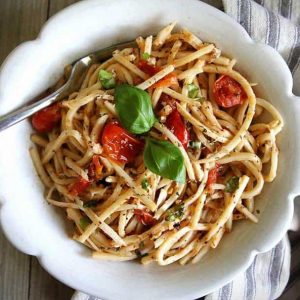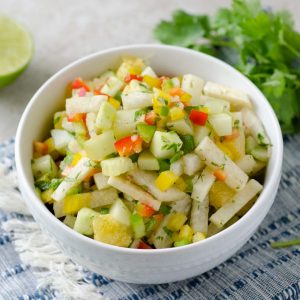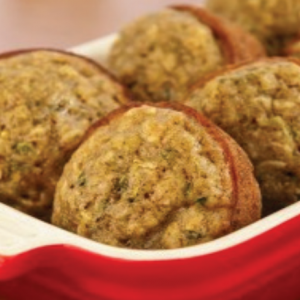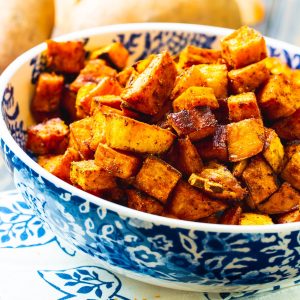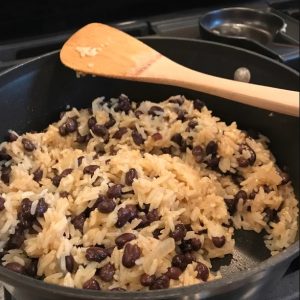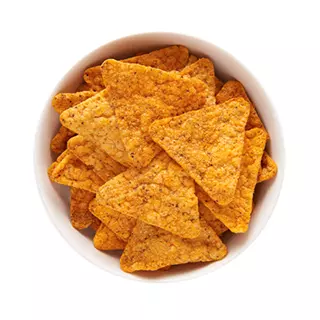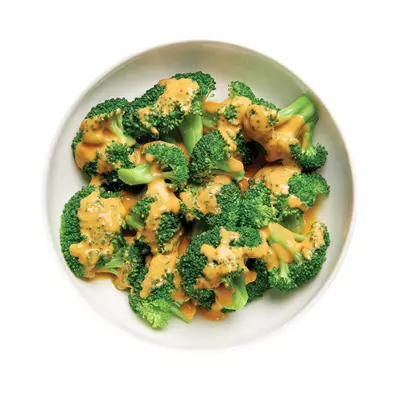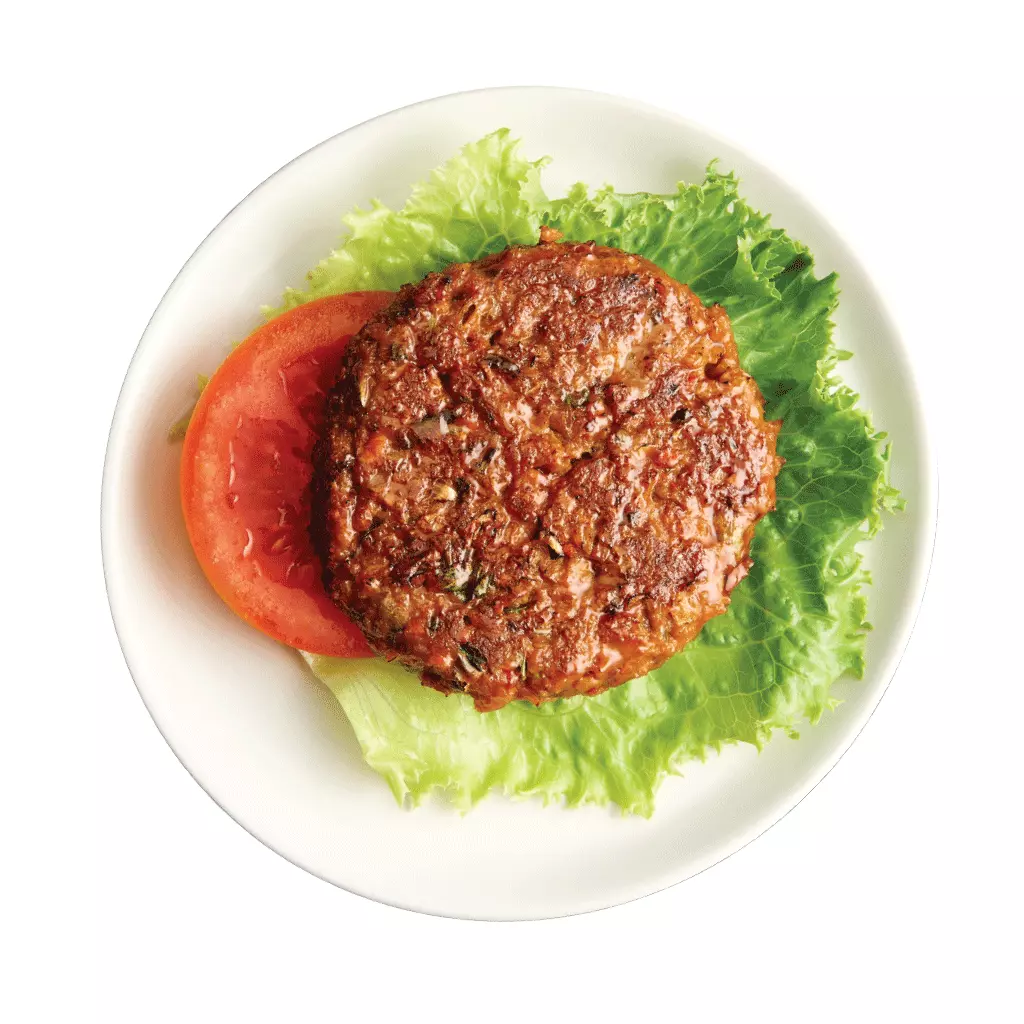Meal prepping is the act of preparing your meals or dishes before you actually want to eat them.
It’s very popular among people with a busy schedule since it can help save a lot of time and money. For those on a diet, especially Ideal Protein, meal prepping is an indispensable way to maximize your losses, avoid boredom and keep yourself on track to goal and beyond into maintenance.
Having your meals prepared ahead of time can help ensure correct portion sizes, allowing you to meet your daily nutrition goals. It also prevents you from making unhealthy food choices, such as takeouts or prepared foods, especially when stressed or too tired to cook.
Because meal prepping requires deciding what to eat in advance, it can also result in more exciting and nutritious meal options over the long haul.
There are many different ways to meal prep, and not all of them require spending an entire Sunday afternoon cooking meals for the week ahead. You can select which method or methods suit you best.
This comprehensive guide will discuss the basic principles of meal prepping, steps to follow, the proper containers to use, and every other thing you need to know about meal prepping.
Let’s get started.
How Does Meal Prepping Benefit You?
Before we discuss how to start meal prepping, let us take a look at how it actually helps you.
Below are some significant benefits of meal prep:
1. Save Time
Studies have shown that Americans who cook at home spend more than 7 hours a week preparing food and doing cleanup, which means that they spend two weeks (actually 15.8 days) of the year inside the kitchen. However, people who do meal prep can cook a week’s worth of meals within 1 to 4 hours. Let’s say it takes you 3 hours to meal prep; you will still have additional nine days every year to do activities you really enjoy!
2. Allow You to Make Healthy Food Choices
According to the Harvard School of Public Health, meal prep can help control weight and contribute to a more nutritionally balanced diet. When you prepare meals from scratch, you have absolute control over what you put into your body. When on a diet like Ideal Protein, controlling the ingredients in your meal is essential to staying on protocol and in ketosis. And since everything is already ready, there is less temptation to order unhealthy snacks or eat restaurant foods.
3. Increase Your Productivity
Do you know why successful individuals like Albert Einstein and Steve Jobs wear the same dress every day? It is to prevent decision fatigue. Reducing the number of daily decisions will improve your productivity. The same goes with meal prep. You don’t have to worry about what to eat anymore, which frees up your mind and supercharges your productivity. And since you will always have healthy meals available, you will not suffer from distracting hunger pangs and brain fog.
4. Save a Lot of Amount of Money (and Minimize Waste)
Waste is a common issue worldwide, so anything we can do to reduce waste is welcome. Planning your meals helps ensure you only purchase the ingredients you need, reducing food wastage and saving you a lot of money. In fact, most Ideal Protein dieters save more money while on the diet when they meal prep than not being on a diet. In general, an average American could save up to $215,000 through meal prepping.
5. You’ll Have a Better Relationship with Food
When you meal prep, you learn new things about nutrition, and your perspective towards food changes for what it is: energy and nutrients. You will learn to eat only when you’re hungry instead of making unwise decisions due to cravings and emotional triggers.
6. Your Attempts Will Inspire Others
No wonder, when you see someone doing something good, it sparks some inspiration in you as well. Just like that, when people see you choosing healthy habits and leading a healthy lifestyle, it might inspire them to bring healthy changes in their life too.
Various Ways to Meal Prep
It may seem like preparing a week’s worth of meals will take a large part of your weekend. But there’s no need to spend the whole Sunday evening in the kitchen since there are several meal prep methods. You can always find one that works for you.
Below are the common ways to meal prep:
- Batch cooking: Cooking large batches of a particular recipe and then dividing it into small portions to be frozen and consumed over the next couple of weeks. These can be great options for lunch or dinner.
- Make-ahead meals: Complete meals prepared ahead of time, which can be stored in the fridge and heated again when you want to eat them. This method may be suitable for dinnertime meals.
- Separately portioned meals: Cooking fresh meals and splitting them into separate portions to be put in the fridge and eaten over the next couple of days. This strategy may be used for quick lunches and is great for sticking to your portion requirements.
- Ready-to-cook ingredients: Getting all the ingredients for specific meals ready in advance, cleaning, chopping, and storing to reduce cooking time in the kitchen.
The right meal prep method to choose will depend on your nutrition goals and daily routine.
For example, make-ahead breakfasts can be an excellent option if you want to simplify your morning routine. For those on Ideal Protein, a batch of zucchini oatmeal muffins or omelet muffins can make the difference between starting the day on plan and setting yourself up for success, and skipping breakfast due to time. And having batch-cooked meals in your freezer is especially good for people who don’t have much time in the evenings.
You can also combine the meal prepping methods based on your specific situation. It’s good to begin with the process you like most and gradually try out others to know what’s most suitable for you.
Quick summary: There are many different ways to meal-prep, based on your daily schedule, preferences, and goals. Some of them include cooking big batches of food to be refrigerated, whole meals to freeze for later, and individual portions to mix it up as you like.
5 Simple Steps to Successful Meal Prepping
Meal prepping can seem challenging, especially if you are doing this for the first time. But it does not need to be. Here are five easy steps to meal prep like a pro:
Step 1 – Plan Your Meal Prep
Preparation, they say, is the key to success.
A little planning can go a long way in ensuring you have a successful meal prep, especially while on a diet.
Aside from making cooking things easier, meal planning can also help improve your health. A study conducted in 2017 has indicated that individuals who plan out their meals are more likely to have a better food quality and less likely to be obese.
Here are the most important things to consider when planning your meals:
First off – decide when you would like to prepare your meals
Choosing when to cook is one of the most crucial steps in meal prepping.
This timing is essential because you may be already very busy – dealing with work, school, house chores, family commitments, not to mention doing something for yourself.
Making meals from scratch every day is another challenging task to include in your long list of things to do.
The best thing about meal prepping is that it takes a small amount of time every week. You can choose any day or days that work best for you!
Many people find it easier to meal prep on a Sunday evening and purchase ingredients a day before. There are more convenient ways to get your shopping done, such as complimentary grocery store pick-up services or shopping and delivery services like InstaCart.
Why do Sundays work well for most people?
Sundays work well because that is when most people are likely to have a little more free time. Making your meals on a Sunday also gets you ready for the workweek. It will help you get off on the right foot and give you a dose of momentum to see you through the week.
However, the most crucial thing is to choose a time that suits you. If you treat meal prep like it’s essential, it is more likely to become a habit, and you will begin to see those extraordinary results very soon.
Secondly – choose the number of meals and kind of meals
Deciding the number of meals to prepare and what each meal should include can be difficult.
It’s best to choose which meals you want to cook and which meal-prepping method suits you.
Also, you should check your calendar to know how many breakfasts, lunches, and dinners you’re going to need for the forthcoming week.
There are excellent resources for meal ideas, meal planning, and even applications that can help you figure what to prepare. Truthfully, most adults rotate through 10 lunch and dinner ideas in their daily life so adding a few more ideas will help create variety. Also, as mentioned before, mixing the methods (fresh preparation and freezing meals) can help you develop flexibility and variety.
Make sure to consider the times you may eat away from home, i.e., while on dates, at brunch with friends, lunch meetings with colleagues, or at business dinners.
When choosing the meals to prepare, it is good to start with a few recipes that you are already familiar with and know you enjoy. This familiarity will make planning your meals easier.
Avoid selecting just one recipe for the entire week because the lack of different kinds of food can cause boredom, prevent your body from getting all the nutrients it requires, and even slow down your progress if you are on a diet.
Instead, you should choose meals containing familiar and new veggies prepared in a variety of different ways.
For those on Ideal Protein Diet, once you transition to phase 2 and 3, you will add in complex carbohydrates such as legumes, sweet potatoes, and quinoa. Another good way to add variety is by incorporating a vegan or vegetarian meal into the mix and using your Ideal Protein foods, such as soups, to meet your protein requirements.
Finally – ask yourself: do you have all the things you need to get started?
You don’t need a fully-equipped, state-of-the-art kitchen to cook meals at home. Here are some basic things you will need to make your meal prep easier:
- Pans/pots
- Heat: oven, stove, pressure cooker or Instant Pot, toaster, microwave
- Knife
- Measuring cups
- Measuring spoons
- Cutting board
- Containers
- Foil
- Spatula
- Food thermometer
Pantry + Grocery Basics
- Sources of protein: chicken, eggs, beef, wild salmon, sardines, tofu, see your allowed proteins list for more ideas.
- Non-starchy veggies: Broccoli, spinach, kale, leafy greens, cucumber, ginger, pepper, Brussel sprouts, cabbage, cauliflower, garlic, eggplant, and zucchini.
- Unsaturated oil/vegetable oil: Coconut oil, olive oil (regular and extra virgin), and avocado oil.
- Seasonings: Spices, salt, pepper, dried herbs
For those not on a low carb diet or Ideal Protein Phase 1, you’ll also want to add Grains/starchy veggies: Quinoa, brown rice, wild rice, sweet potatoes, plantain, corn, pumpkin, pasta, buckwheat, squash.
Step 2 –Select Your Meal Prep Containers
Your choice of container is an important thing to consider, whether you intend to eat at home or while on the move.
There are many essential factors you may easily overlook when choosing the proper meal containers. To select the most suitable meal prep containers, you need to ask yourself whether you will eat your meals cold or hot.
- Glass containers: Glass containers will be the best option all around, especially if you’re planning to reheat your meals in the oven. These containers are very strong and react well to heating. Additionally, storing foods in glass keeps them the freshest and allows you the flexibility of putting them in the fridge, freezer, microwave, or even the oven.
- BPA-free plastic or glass containers: If you need to microwave your meals, it’s best to choose glass or BPA-free plastic containers to prevent leaching. This distinction is important because research has shown that the chemical used in making certain plastics seep into drinks and foods. These chemicals can negatively affect the brain, blood pressure, and prostate.
- Metal containers: Metal containers are a great option if you are not sensitive to metals and want to eat your meals cold and not reheat them.
Note: it’s not safe to microwave meals in metallic containers because metal deflects electromagnetic waves away from the food, which can lead to uneven heating, damage the oven, and cause a fire hazard.
The Size of the Container Matters…
Meal prep containers are available in different sizes and shapes. The most crucial thing is to get a container that suits you and your present goals.
Choose a container that’s not too small to make you undereat and not too big to result in overeating. Look for something in between.
Meal prep containers that are 2-3 inches deep, 6-9 inches long, and 6-9 inches wide work well for most people.
Below are some meal prep container options you may want to consider:
Pyrex Glass Containers with Lids:
- Fitpacker BPA-Free Plastic Meal Prep Containers
- Airtight Glass Meal Prep Containers
- BPA Free Plastic Bento Style Meal Prep Bowls
- Mason Jar Containers
Quick summary: We recommend choosing containers that are 2-3 inches deep, 6-9 inches wide, and 6-9 inches long. Metal and glass containers are usually safe to place in the oven. Don’t ever put metal containers in the microwave. BPA-free plastic containers are travel-friendly and safe to put in the microwave.
Step 3 – Picture Your Portions
Portioning your food won’t be difficult since you have already selected your containers. Especially on Ideal Protein’s phase 1 diet or weight loss plan, you need to consider your portion sizes before cooking to meet your daily requirements. This visual imagery is also a helpful skill to help you estimate portion sizing when you are in situations where measuring isn’t realistic. Later, when you are in maintenance (Ideal Protein Phase 3), it will help you create nutritionally balanced meals. This strategy will also make it easier for you to figure out what to buy, preventing food wastage and saving you a lot of money.
While on Phase 1 of Ideal Protein, you will closely follow the dietary guidelines, making sure you consume all of your protein and veggie requirements and don’t skimp on your green salads.
Measuring with a scale and measuring cups is advisable, but you may also use a handful as a cup equivalent and your palm size and thickness to represent 4oz of protein.
For a Breakfast Meal:
A lot of people like to eat small portions of food at breakfast. Unless you are doing intermittent fasting, it will be good to choose a healthy breakfast, as this will help you maintain energy levels and appetite all through the day. Most people who diet get worried that if they start eating, it will be an out-of-control eating day, but that isn’t actually the case. Those that eat breakfast are less likely to overeat or snack later in the day. Also, your metabolism is fastest in the morning, so giving your body what it needs when it needs it is a great strategy to sidestep fat storage.
Ensure that you add good sources of fiber-rich foods, protein, and healthy fats to make you feel full for longer.
For a Lunch or Dinner Meal:
Fill 25% of your container with protein, another 25% with starchy vegetables/grains, and the remaining 50% with salad greens or non-starchy vegetables.
Also, you may use your hand as a reference when portioning meals. If you are using poultry, fish, or meat for protein, a great portion would be the size of your palm. For starchy veggies or grains, the size of your fist will be a good portion. Leafy greens and non-starchy veggies are rich in minerals and vitamins but contain low amounts of calories. You can fill the rest of the container with as much as you want.
Healthy fats can be added to the meal by using oils in salad dressings or during cooking. Avocados, seeds, nuts, and oily fish are also good sources of healthy fats.
For a Phase 1 Lunch or Dinner Meal:
Fill 50% of your container with approved vegetables, 25% with your approved protein, 25% green salad and a touch of olive or other approved oils.
Once in maintenance, health experts advise that 45 to 65% of your daily calories should be carbohydrates, 10 to 35% from protein, and 20 to 35% from fat. Portioning your meals will help you achieve this breakdown. You should be able to come up with a nutritionally balanced meal by just looking at your meal container. And there is no need for heavy math or using a calculator.
Quick summary:
An Ideal Protein Phase 1 dinner or lunch meal should include ¼ green salad, ¼ protein source, and ½ non-starchy vegetables.
A Phase 3 dinner or lunch meal should include ¼ carbohydrate source, ¼ protein source, and ½ non-starchy vegetables or salad.
Step 4 – Select Your Recipes and Start Cooking
Now, it’s time for the exciting part…
Having done the groundwork and meal planning, it is time to select your recipes and begin cooking!
You can use the portions outlined in the Ideal Protein Phase 1 Meal Plan (Make sure to select only approved vegetables if on phase 1 of the Ideal Protein Diet), or for those in maintenance, use the Phase 3 block calculations or the step above to create your own recipes!
Below are some delicious recipes you may want to prepare:
Non-starchy vegetable recipes
Protein recipes
10 of Our Favorite Ideal Protein Phase 1 Recipes
Meal Prep Roasting Tips
Roasting is an effortless way to bulk cook ingredients without putting in too much time or work.
If you would like to be creative and experiment with your roasting recipes and seasoning, check out this chart for inspiration.
Quick summary: Create your own recipes by combining and matching protein and non-starchy vegetables (those in maintenance, add starchy veggies or whole grains). You can also incorporate healthy fats and natural seasonings (spices and herbs) to prepare delicious meals.
Step 5 – Cook, Store, and Reheat Foods Safely
Food safety is a critical part of meal prepping that many people ignore.
Preparing, storing, and reheating foods at the correct temperature can help avoid food poisoning, which affects around 9.4 million people in the US every year.
Below are some recommended food safety guidelines:
- Keep the ideal temperatures in mind: Make sure to keep the fridge at or below 40 °F (5°C) and freezer at or below 0°F (-18°C).
- Cool foods fast: Fresh foods and meals should be refrigerated within 2 hours of cooking or purchase. To cook foods quickly, spread them out in shallow containers and instantly put them in your fridge.
- Be mindful of storage times: Cook fresh fish, meat, or chicken with 2 days of buying it and red meat within 3 to 5 days. Place them on the bottom shelf of your fridge until it is time to cook them.
- Cook at the correct temperatures: Cook meats until they attain an internal temperature of 165°F (75°C) to kill the bacteria that may be present.
- Defrost foods safely: Thaw frozen meals or foods in your fridge, not on your countertop. To thaw food quickly, immerse them in cold tap water, replacing the water every half an hour.
- Don’t reheat foods more than once: The more times you reheat frozen foods, the greater the risk of food poisoning. Therefore, you should reheat thawed foods just once.
- Reheat foods at the correct temperate: Reheat all meals to 165°F (75°C) before eating them. Frozen meals should be reheated and consumed within 1 day of thawing.
- Use labels: Make sure to label and date each container so that you can eat foods while they are still safe to consume.
- Consume foods within the correct period of time: Meals kept in the fridge should be eaten with 3 to 4 days and frozen meals within 3 to 6 months.
Quick summary: Preparing, storing, and reheating meals at the proper temperatures can help mitigate the risk of food poisoning. The above guidelines will provide an overview of the critical food safety measures to bear in mind.
Tips to Reduce Cooking Time
Many people hate spending hours cooking in the kitchen, and one of the main advantages of meal prepping is that it lowers cooking time.
Below are tips that will help you reduce cooking time.
Keep To a Regular Schedule
You need to stick to a consistent schedule for meal prepping to work. Knowing the exact time to go grocery shopping and cook your meals will enable you to create a great routine.
The meal-prep schedule is totally up to you. Just make sure that it suits your weekly routine. Choosing certain times and adhering to them will make the decision-making process easier, giving you more mental space for other important things.
Select the Right Combinations of Recipes
Choosing the right combination of recipes will allow you to be more efficient in the kitchen.
Go for recipes that require various cooking methods to save time (oven, crockpot, and instant pot or pressure cooker). Having several recipes requiring the same cooking tool, i.e., the oven, will reduce the number of meals you can make at a time and lengthen your meal prep time.
This consideration is very crucial when choosing make-ahead meals or considering batch cooking.
A good idea is to select just one oven meal and two stovetop meals (max) at a time – for instance, a stir-fry, baked vegetables, and a soup.
You can then include meals that don’t need cooking, such as salads in the mix.
Organize Your Prep and Cook Times
Having a well-planned-out workflow is going to save you plenty of cooking time.
One good way to organize your prep and cook times is by beginning with the recipe that will take the longest time to cook. This is usually the soup or meal that is cooking in the oven. You can then focus on the others once that meal is cooking.
Prepare the cold meals last since you can easily make them while the other meals are underway.
To save more time, check the ingredients for each recipe again before you start cooking. So, if two or more recipes include sliced onions or julienned peppers, you can cut the whole quantity needed at a time.
Using automated appliances like a slow cooker or pressure cooker can make your workflow simpler.
Create a Shopping List
Shopping for groceries can waste a whole lot of time.
To reduce the time you spend grocery shopping, make sure to have a comprehensive grocery list arranged based on your supermarket departments. This way, you will not be revisiting a section you have previously been to, which will speed up your shopping.
Other ways to minimize your shopping time include visiting the grocery store just once per week or using a grocery delivery service.
Quick summary: To spend less time in the kitchen, keep a regular schedule and use a grocery shopping list. It’s also crucial to select the right combination of meals and plan your cooking.
Frequently Asked Questions About Meal Prep
This meal prep guide contains many information and tips, so don’t think you have to assimilate everything at once.
Keeping that in mind, we have compiled below some common questions and challenges relating to meal prepping (especially for Phase 1 of Ideal Protein) and how to overcome them.
Meal prep seems daunting. How do I make sure I remain on track?
Begin slow and stick to a process. It will become so easy and natural that you will wonder why you did not start earlier! Soon, meal prep will become ingrained in your lifestyle once you settle in with the initial period of making the switch.
How do I prevent getting bored of eating the same meals every day?
Although cooking with the same ingredients for your meal prep may be convenient, it is not the best for boredom. You may want to keep things fresh and exciting by trying out different flavor profiles. Add various spices and herbs to dip into different cuisines from around the globe.
What is the difference between meal delivery and meal prep?
You will have to choose one or two days to plan and make your meals with meal prep. However, with a meal prep delivery service, you order already prepared meals without planning them, buying ingredients, or doing any cooking. Meal prep is crucial while on Ideal Protein Phase 1, whereas when you transition to Ideal Protein Phase 3, a meal delivery service may be a better fit for you. Most meal delivery services allow you to choose the number of meals you want during the week, and it’s usually flexible in terms of starting, pausing, and stopping.
How long does it take to meal prep?
Well, this will depend on the number of meals you are prepping at once and how complex each recipe is. It typically takes around 30 minutes to 4 hours to make a week’s worth of meals.
Do I need to measure calories?
For Phase 1 Ideal Protein – No. The beauty of Ideal Protein Phase 1 is there is no calorie counting; instead, you will focus on meeting the overall daily diet requirements. If you’re counting anything, it will be net carbs, making sure you’re remaining between 25 – 45 grams of net carbs daily.
For those in maintenance, once you develop your macronutrient blocks and refine your ability to recognize your target quantities visually, you won’t need to count calories. If you do Resting Metabolic Rate testing as part of your customized Ideal Protein transition or independently, you’ll know exactly how many calories you are targeting and will learn how to allocate those calories within your standard meal prepping. The goal is to develop the ability not to count but to estimate based on learning what your body needs accurately. Although people who want to attain a specific body composition may benefit from measuring their calorie consumption, it is not really necessary to make meal prep work!
Will meal prep suit my diet?
Yes. Meal prep will work great, whether you’re on Ideal Protein Phase 1, Keto, Paleo, Atkins, Vegetarian, Plant-based, Whole30, Gluten-Free, or Flexitarian diet. The good thing about meal prep is that it can be adjusted to fulfill any dietary needs.
How do I store prepped meals, and how long should they be kept in the fridge?
We advise keeping your prepped meals in BPA-free, freezer, and microwave-safe containers in the fridge for up to 7 days. If you want them to have a longer shelflife, you can store the meals in the freezer.
How do I freeze prepped meals?
Put the meals in sealed, freezer-safe containers to maintain the freshness. It’s good to store meals individually or in small quantities, so you will only be defrosting and reheating the food you need when it’s mealtime.
Where can I purchase meal prep containers?
You can find suitable meal prep containers in the food storage section at department/grocery stores like Walmart or Target. They are also available on websites such as Amazon.
How many days can I prep meals for?
This is entirely up to you. A lot of busy people like to prep meals for the upcoming week on a Sunday. If you want to prepare meals for longer, you can put them in the freezer to increase their storage life. Remember that some meals, like salad, won’t taste as great once they are frozen.
Why do people meal prep, and is it a worthy thing to do?
There are different reasons why people meal prep. Most people do it to save time during the week, eat healthily, or save a bundle. And it’s actually worthwhile if you consume and enjoy the foods you make.
Is meal prep safe?
Meal prep is entirely safe, provided you stay safe in the kitchen and store your meals appropriately. You can follow the food safety tips from the CDC on how to meal prep safely and prevent foodborne diseases.
How do I cook rice for maintenance meal prepping, and how much do I need to cook for my meal prep?
This will depend on the number of meals you’re prepping for. A cup of uncooked white rice will produce 3 cups of rice when cooked, while a cup of uncooked brown rice will give you 2 cups cooked. So if you are cooking rice for 10 meals, we suggest that you cook 2½ cups of brown rice, which should give you 5 cups. You can then eat 1/2 a cup of rice per meal.
How do I buy groceries for my meal prep?
Buying groceries for meal prep takes a little planning, but it pays off in significant ways. First, you need to decide how many meals you need and the recipes you will follow before grocery shopping.
Is a meal prep delivery service worth it?
A meal prep service is worth it if you wish to reap the benefits of meal prep without planning, shopping, or cooking. If you opt for this route, you need to ensure that you find one that offers balanced, healthy meals packed in appropriate containers. However, this may not be easy if you are on a structured diet and is usually helpful in maintenance.
Final Word
The adage remains true – fail to plan – plan to fail. Meal prepping is the key to success on any diet and especially if you are on Ideal Protein. It is an excellent idea for people who want to reduce their time in the kitchen.
Plus, it can enable you to eat nutrient-dense, healthy meals and avoid the less nutritious fast food choices and save money in the process.
Based on your nutrition goals, preferences, and schedule, meal prepping can involve cooking whole meals refrigerated, large batches of foods to be frozen, or a mix of the approaches necessary to fit your life and lifestyle.
We recommend finding a method that suits you and choosing one day every week to plan, shop, and cook your meals.
If you want to learn more about meal prep, eating healthy, or want to transform your life with Ideal Protein, simply schedule a free consultation with us.



